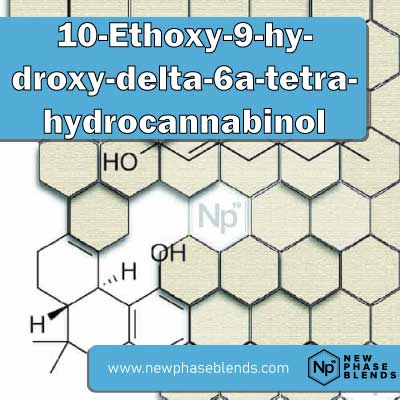What is 8,9-Dihydroxy-delta-6a-tetrahydrocannabinol?
8,9-dihydroxy-delta-6a-tetrahydrocannabinol is part of the Cannabitriol cannabinoid class. It is a compound that researchers have newly discovered in cannabis. It is known simply as 8-Β-hydroxy-Δ-9-thc.
8,9-dihydroxy-delta-6a-tetrahydrocannabinol is a Cannabitriol and a component of tetrahydrocannabinol. Until now, science had little knowledge about this compound. A leading cause of this is the ban on cannabis and its products in most of the world.
Related: What is Delta 9?
However, due to the recent awakening of research and the foreseeable benefits of cannabinoids, many constituents of cannabis are now subject to research, and scientists have discovered new compounds.
8, 9-Dihydroxy-delta-6a-tetrahydrocannabinol together with other cannabitriols have been known since as far back as 1966, but due to bans on the purchase and use of these compounds, research work has been tedious and limited.
There was a breakthrough in 2014 when a Jamaican researcher was able to isolate the parent cannabitriol compound during research and name other subcomponents of cannabitriols.
Related: How Long Does Delta 8 THC Stay In Your System?
There is limited information on 8,9-dihydroxy-delta-6a-tetrahydrocannabinol, and scientists have projected most of its uses and benefits from those of the known members of the same family.
There is ongoing research to ascertain the levels of risk that this compound poses to man, animals, and the environment, as well as its benefits to health and science, and the level of safety that comes with its use.
For the compound to be effective and therapeutic enough to gain worldwide recognition, scientists must consider all these factors.
HOW DOES IT WORK?
8,9-Dihydroxy-delta-6a-tetrahydrocannabinol is a relatively new compound, and as such, its mechanism of action is unknown, and researchers are still working on it.
Related topic: Comparing D8THC and CBD
However, like all cannabinoids, 8,9-Dihydroxy-delta-6a-tetrahydrocannabinol may act on cannabinoid receptors to elicit various reactions that have to do with thinking, memory, coordination, pleasure, concentration, and complete sense of well-being.
It has a similar chemical structure as tetrahydrocannabinol, so it is safe to project the mechanism of action to be similar to that of tetrahydrocannabinol. 8,9-Dihydroxy-delta-6a-tetrahydrocannabinol contains tetrahydrocannabinol but also shows promising characteristics of cannabitriols.
That makes it a potential compound for major research works as it shows beneficial potential to science and health.
POSSIBLE THERAPEUTIC BENEFITS
Some likely benefits of 8,9-Dihydroxy-delta-6a-tetrahydrocannabinol include:
-
Researchers are working at discovering facts about 8,9-Dihydroxy-delta-6a-tetrahydrocannabinol: its use, benefits, risks, hazards, and therapeutic impact on man and animals.
INTERESTING FACTS
- 8,9-Dihydroxy-delta-6a-tetrahydrocannabinol contains two alcohol groups.
- Although 8,9-Dihydroxy-delta-6a-tetrahydrocannabinol contains tetrahydrocannabinol, it is less psychoactive.
- Unlike other cannabinoids, 8,9-Dihydroxy-delta-6a-tetrahydrocannabinol is rare and may not be in all cannabis species.

References
Brogan AP, Eubanks LM, Koob GF, Dickerson TJ, Janda KD. Antibody-catalyzed oxidation of delta(9)-tetrahydrocannabinol. J Am Chem Soc. 2007;129(12):3698-3702. doi:10.1021/ja070022m
National Institutes of Health, Health & Human Services. 8beta-Hydroxy-delta(9)-THC. Retrieved September 15, 2020, from U.S. National Library of Medicine: https://chem.nlm.nih.gov/chemidplus/sid/0038456074
Back to List of Cannabinoids











